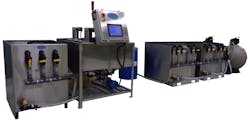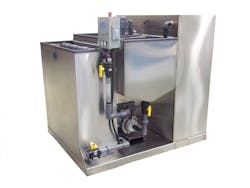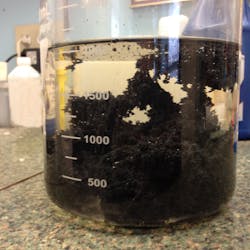How to achieve regulatory compliance with automated wastewater treatment
Terminals that store oil, petroleum, and petrochemicals, and the tank trucks that transport these products must meet U.S. Environmental Protection Agency (EPA) and local wastewater requirements for “effluent.”
Under the Clean Water Act, these liquid waste and sewage discharges include 65 pollutants and classes of pollutants EPA considers “toxic pollutants,” and 126 specific substances are designated as “priority” toxic pollutants. Failing to meet the requirements for storing and transporting these products can result in severe fines.
At fuel storage depots, as well as rail, barge, and road tanker transport hubs, oil can enter the wastewater stream. Often the wastewater is discharged into local sewer or trade waste systems and must meet local environmental specifications. Typical contaminants include solvents, detergents, grit, lubricants, and hydrocarbons. So a wastewater treatment system that effectively separates contaminants from water is essential for oil terminals and tanker hubs, so they can legally discharge or reuse the water.
However, traditional treatment systems are complex, often requiring multiple steps, a variety of chemicals and a considerable amount of labor. Even when the process is automated, technicians often must monitor the equipment in person. This usually requires oversight of mixing and separation, adding of chemicals, and other tasks required to keep the process moving. Even then, the water produced can fall below mandated requirements.
Although paying to have oil terminal and tanker wastewater hauled away also is an option, it’s expensive. A more cost-effective solution is to treat the industrial wastewater at its source, so the effluent can go into a sewer, and treated sludge passes a TCLP (Toxicity Characteristics Leaching Procedure) test and can be disposed of as non-hazardous waste in a local landfill.
Fortunately, complying with EPA and local wastewater regulation has become easier with more fully automated, wastewater treatment systems. Such systems not only reliably meet regulatory wastewater requirements, but also reduce the cost of treatment, labor, and disposal when the proper separating agents are also used.
Cost-effective, automated wastewater treatment
In contrast to labor-intensive, multiple-step processes, automated wastewater treatment can help streamline production, usually with a one-step process, while lowering costs at industrial facilities.
according to petrochemical industry consultants at Sabo Industrial, a New York-based manufacturer, distributor, and integrator of industrial waste treatment equipment and solutions, including batch and fully automated systems, Cleartreat separating agents, bag filters, and accessories.
The water is typically then separated using a de-watering table or bag filters before it is discharged into sewer systems or further filtered for re-use as process water. Other options for de-watering include using a filter press or rotary drum vacuum. The resulting solids are non-leachable and considered non-hazardous, so will pass all required testing.
These systems are available as manual batch processors, semi-automatic, and automatic, and can be designed as a closed-loop system for water reuse or provide a legally dischargeable effluent suitable for the sewer system. A new, fully customized system is not always required. In many cases, it’s faster and more cost effective to add to or modify an industrial facility’s current wastewater treatment systems when feasible.
However, because every wastewater stream is unique to its industry and application, each wastewater treatment solution must be tailored to the application.
The first step in evaluating the potential cost savings and effectiveness of a new system is to sample the wastewater to determine its chemical makeup, followed by a full review of local water authority requirements, according to Sabo Industrial.
The volume of wastewater that will be treated also is analyzed to determine if a batch unit or flow-through system is required. Other considerations include the size restrictions, so the system fits within the facility’s available footprint.
Separating agents
Despite all the advances in automating wastewater treatment equipment any such system requires effective separating agents that agglomerate with the solids in the wastewater, so the solids can be safely and effectively separated out.
Bentonite has a large specific surface area with a net negative charge that makes it a particularly effective adsorbent and ion exchange for wastewater treatment applications to remove heavy metals, organic pollutants, and nutrients. As such, bentonite effectively encapsulates the materials. This can usually be achieved in one-step treatment, which lowers process and disposal costs.
In contrast, polymer-based products do not encapsulate the toxins, so systems that use that type of separating agent are more prone to having waste products leach back out over time or upon further agitation.
Today’s automated systems, along with the most effective Cleartreat separating agents, can provide oil terminal and tanker hub operators with an easy, cost-effective alternative so they remain compliant with local ordinances and the EPA.



